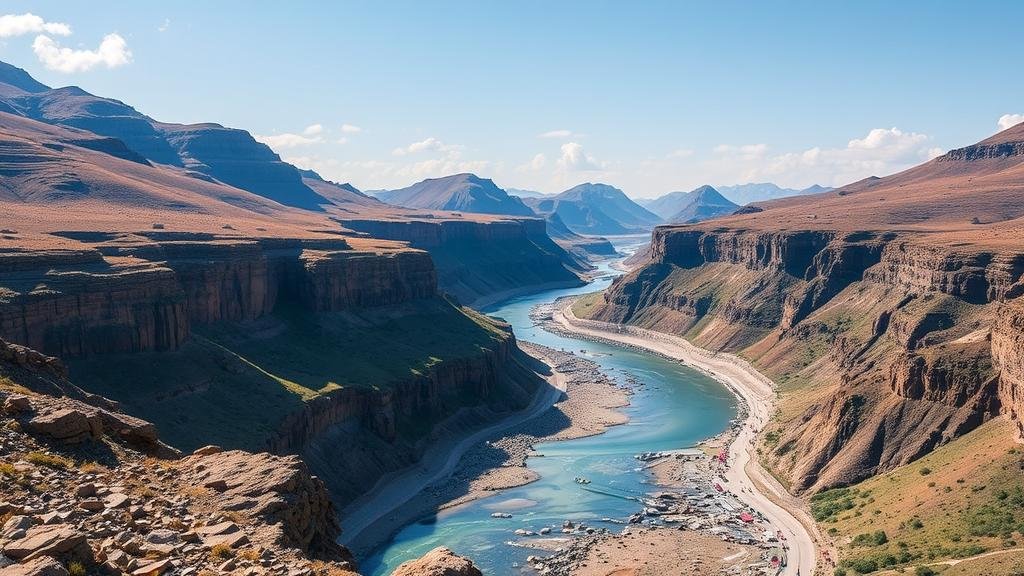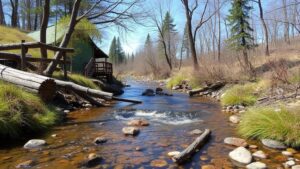Techniques for Locating Gold Nuggets in Ancient River Channels
Techniques for Locating Gold Nuggets in Ancient River Channels
Gold prospecting has captivated adventurers and fortune seekers for centuries. Among the various strategies utilized in the pursuit of this precious metal, the search for gold nuggets in ancient river channels remains a favored method. Ancient river channels, created by the natural erosion of landscape over millennia, can serve as treasure troves for those knowledgeable in the art of prospecting. This article explores effective techniques for locating gold nuggets in these historic waterways.
Understanding Ancient River Channels
To effectively locate gold nuggets, it is vital to understand the formation and characteristics of ancient river channels. These channels often contain sediment that has been deposited over thousands of years, with gold accumulating at various points. Gold typically settles in these channels due to its high density, particularly in areas of slower water flow.
- Identifying the substrate: Ancient riverbeds are typically composed of gravel, sand, and cobbles.
- Recognizing significant features: Look for bends, pools, and areas behind obstacles where sediment can collect.
Techniques for Locating Gold Nuggets
Several techniques can enhance the likelihood of finding gold nuggets in ancient river channels. e methods include the use of modern tools, geological knowledge, and time-tested traditional practices.
1. Prospecting Tools
Modern gold prospecting employs a variety of tools that can significantly improve success rates:
- Metal Detectors: High-frequency metal detectors are helpful for locating buried gold nuggets. These devices can distinguish between different types of metals, thus allowing prospectors to isolate gold from other metals.
- Pans and Sluice Boxes: Traditional techniques like panning and using sluice boxes allow prospectors to separate gold from sediment using gravity and water movement.
2. Geological Mapping
Understanding the geology of the area can lead to more informed decision-making concerning where to prospect:
- Study historical geological maps, which can indicate past river pathways and potential gold deposits.
- Analyze the composition of local rock formations, as certain minerals such as quartz often accompany gold deposits.
3. Participating in Local Groups
Joining local prospecting groups can provide insights into forgotten mining sites and recent successes. Experienced members often share valuable information and can recommend tested techniques and sites. Also, these groups may organize field trips that offer a hands-on learning experience.
Analyzing Erosion Patterns
Natural erosion plays a key role in the redistribution of gold deposits. Understanding erosion patterns can lead prospectors to new areas of interest:
- Factors Influencing Erosion: Water flow, geology, and vegetation significantly affect how riverbanks erode. Prospectors should study these factors to predict areas of possible accumulation.
- Field Observations: Observing current river conditions can give insight into which stretches hold the most promise for finding nuggets.
Case Studies: Success Stories
Anecdotal evidence and documented case studies illustrate the potential of locating gold in ancient river channels:
- The Klondike Gold Rush of the late 1800s saw miners earn fortunes by targeting old river channels that had long since dried up.
- Modern prospectors in California continue to find gold nuggets in ancient stream beds, contributing to ongoing interest in historic riverine deposits.
Conclusion: Actionable Takeaways
In summary, locating gold nuggets in ancient river channels requires a blend of historical knowledge, modern technology, and keen observation. By utilizing tools such as metal detectors and traditional panning methods, understanding the geological context, and analyzing erosion patterns, modern prospectors can increase their chances of success. Engaging with local prospecting communities can further enhance knowledge-sharing and access to potential gold-rich sites.
Whether a novice or an experienced gold hunter, applying these techniques–alongside patience and persistence–can lead to fruitful discoveries in the search for gold in ancient waterways.



